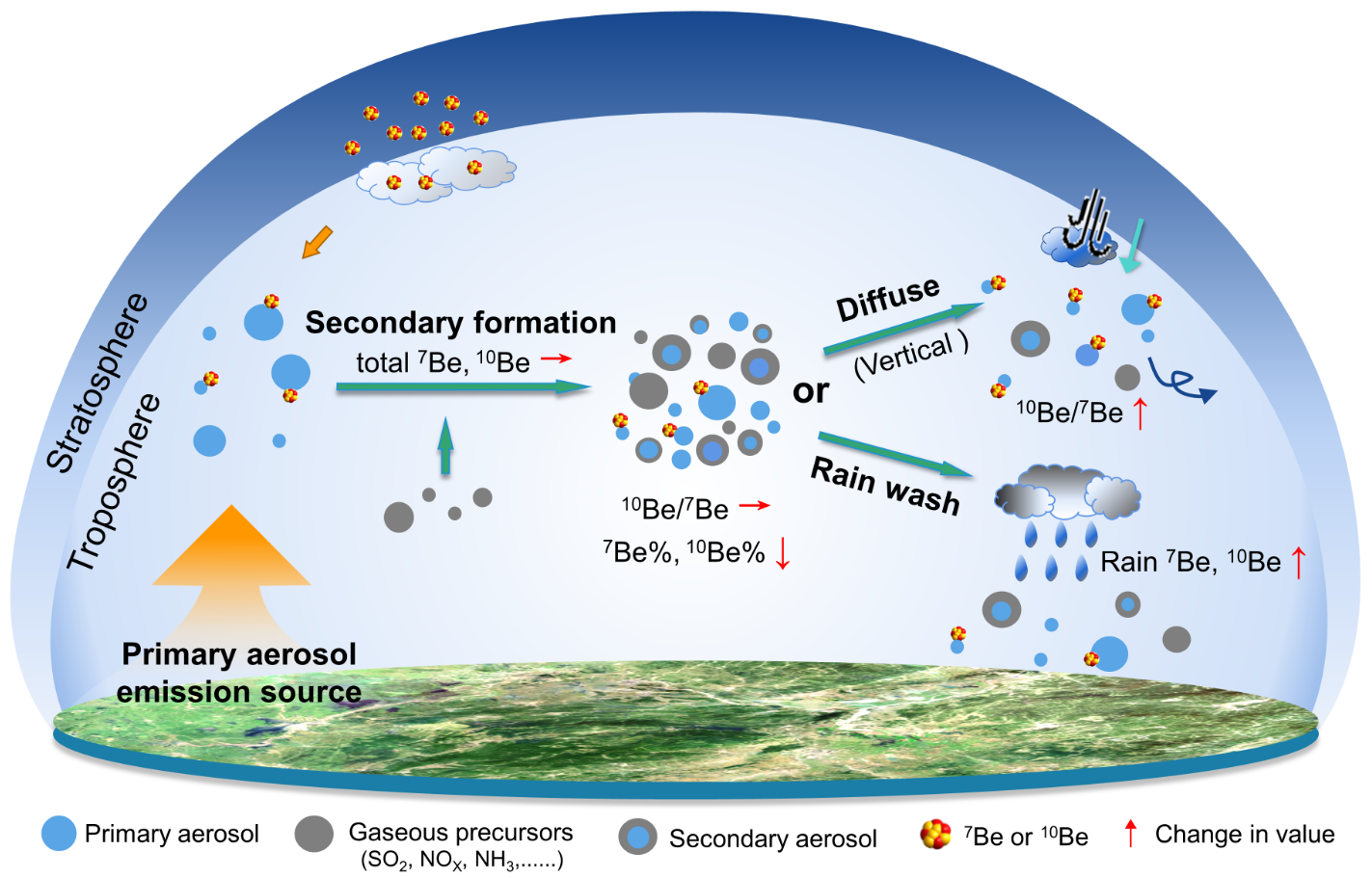The secondary formation and diffusion processes of aerosol are complex and can influence the environment as well as human health. Understanding the formation and removal process of aerosols is significant for the treatment and emission management of atmospheric pollutants.
Recently, a research group from the Institute of Earth Environment of the Chinese Academy of Sciences (IEECAS) investigated the role of meteoric cosmogenic 7Be and 10Be in the secondary formation and removal process of aerosols.
Cosmogenic 7Be and 10Be are single source, chemically inert, and adsorbed on aerosol transport. The dilution and tracing effect based on 7Be and 10Be can reveal the secondary formation and removal process of aerosols.
The researchers obtained the daily resolution of atmospheric 7Be, 10Be, and 10Be/7Be during heavy pollution period in Xi'an, northwest China. Based on this observational record, they investigated the role of atmospheric origin 7Be and 10Be in the secondary formation and removal of aerosols.
They found that during the short-term haze pollution formation period, due to the rapid formation of secondary aerosols, the existing and fixed total amount of 7Be and 10Be in the atmosphere was diluted. Using this degree of dilution, the relative content of secondary aerosols in the aerosol particles during this period can be quantified.
In addition, 7Be and 10Be are adsorbed on the surface of the aerosol after being produced, so when the aerosol particles are removed by rain, the increase of rainwater 7Be and 10Be can quantify the degree of aerosol removal by rain.
The 10Be/7Be ratio is a tracer for the stratospheric air mass in the absence of other meteorological conditions (rainfall and horizontal winds) that exploit the diffusion of pollutants.
The study showed that the increase in the 10Be/7Be ratio in some periods was accompanied by a rapid decrease in the concentration of surface pollutants such as aerosols. This indicated that the atmospheric vertical movement caused by the of stratospheric air intrusion had a certain effect on the diffusion of pollutants such as aerosols.
These findings provided a new way to study the chemical and physical processes of aerosols using meteoric cosmogenic 7Be and 10Be.
The study, published in Science of The Total Environment, was supported by the Strategic Priority Research Program of Chinese Academy of Sciences (B), the National Natural Science Foundation of China, and Youth Innovation Promotion Association CAS.







